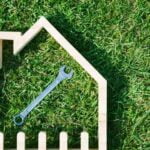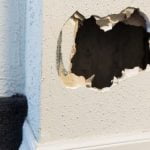What are energy efficient home improvements? In today’s world, where environmental awareness and cost-saving measures are increasingly important, making energy efficient changes to our homes is crucial. Energy efficient home improvements not only help reduce our carbon footprint, but also lead to significant savings on energy bills for homeowners. From simple upgrades to major renovations, there are various ways to make your home more energy efficient, ultimately benefiting both the environment and your wallet.
By focusing on energy efficiency in our homes, we can contribute to a healthier planet while enjoying the practical advantages of reduced utility costs. In this article, we will explore the different ways homeowners can make their homes more energy efficient. From upgrading appliances and lighting, to insulating and weatherizing, investing in renewable energy options and smart home technology, these improvements can have a substantial impact on both the environment and household budgets.
Energy efficient improvements not only make our homes more sustainable but also improve the comfort and functionality of the living space. By understanding the importance of such upgrades, homeowners can make informed decisions that benefit both their households and the environment.
Whether you’re interested in small changes or major renovations, there are numerous options available to increase the energy efficiency of your home. Let’s delve into these possibilities and discover how they can enhance your quality of life while supporting a greener future.
Energy Efficient Appliances
Impact of Energy Efficient Appliances
One of the key benefits of using energy efficient appliances is the reduction in energy consumption. From refrigerators to washing machines, these appliances are designed to run on less electricity, ultimately leading to lower energy bills for homeowners. In addition to cost savings, energy efficient appliances also have a positive impact on the environment by reducing greenhouse gas emissions.
Popular Energy Efficient Models and Features
When it comes to choosing energy efficient appliances, there are a wide variety of options available on the market. From ENERGY STAR certified refrigerators and dishwashers to high-efficiency washing machines and dryers, homeowners have plenty of choices when it comes to upgrading their appliances. Many of these models come with features such as advanced insulation, improved compressor technology, and other innovations that contribute to their energy efficiency.
When considering what are energy efficient home improvements, upgrading to energy efficient appliances is a practical and effective way for homeowners to reduce their overall energy usage and environmental impact. By making these changes, homeowners can enjoy both immediate cost savings and long-term sustainability in their households.
Lighting Upgrades
When it comes to energy efficient home improvements, upgrading your lighting can have a significant impact on reducing energy consumption. Traditional incandescent bulbs are known for their high energy usage and short lifespan, making them less cost-effective in the long run. LED lighting, on the other hand, offers an energy-efficient alternative with a longer lifespan, making it a popular choice for homeowners looking to save on their energy bills.
Impact of LED Lighting:
LED (light-emitting diode) lighting is known for its energy efficiency and durability. These bulbs use significantly less energy than traditional incandescent bulbs and last much longer, reducing the frequency of replacements. Moreover, LED lighting produces less heat, which can also help reduce cooling costs during warmer months. When considering what are energy efficient home improvements, replacing outdated lighting fixtures with LED options should be at the top of the list.
Choosing the Right Lighting Upgrades:
When upgrading your home’s lighting, it’s important to consider different areas and purposes within your living space. For example, task lighting in work areas may require different considerations than ambient or decorative lighting in living spaces.
In addition to LED options, there are other energy efficient choices such as compact fluorescent lamps (CFLs) that can further reduce energy consumption. It’s essential to evaluate these options based on factors such as brightness, color temperature, and compatibility with existing fixtures to ensure you make the most effective choice for each area of your home.
Insulation and Weatherization
Proper insulation and weatherization are crucial components of energy efficient home improvements. By effectively sealing the home against outdoor elements and maintaining a consistent indoor temperature, homeowners can significantly reduce their energy usage and lower their utility bills. Here are some key considerations for implementing insulation and weatherization upgrades in your home:
- Types of Insulation: When considering insulation upgrades, it’s important to understand the different types available. From fiberglass to foam board to spray foam, each type of insulation has its own advantages and ideal applications. For example, foam board insulation is great for exterior walls, while spray foam is better suited for filling gaps and cracks.
- Weatherization Techniques: In addition to insulation, weatherization also plays a critical role in improving energy efficiency. Weatherization techniques can include things like sealing air leaks around doors and windows, installing storm doors or windows, and adding weather stripping. These measures help to prevent drafts and maintain a comfortable indoor environment.
- Professional Assessment: For homeowners unsure of where to start with insulation and weatherization improvements, it can be beneficial to schedule a professional energy audit. During an energy audit, experts can assess the current state of a home’s insulation, identify areas of improvement, and recommend specific solutions tailored to the home’s unique needs.
Making these energy efficient home improvements not only reduces the environmental impact of a household but also provides long-term cost savings by lowering energy bills. By investing in proper insulation and weatherization, homeowners can enjoy a more comfortable living space while also contributing to a more sustainable future.
HVAC Systems
When it comes to making energy efficient home improvements, one of the most significant areas to focus on is the heating, ventilation, and air conditioning (HVAC) systems. HVAC systems are responsible for a large portion of a home’s energy usage, so making changes in this area can have a significant impact on overall energy consumption. By upgrading to energy efficient HVAC systems, homeowners can reduce their energy bills while also reducing their environmental footprint.
Some popular options for energy efficient HVAC systems include:
- High-efficiency furnaces: These models use less fuel to produce the same amount of heat, resulting in lower energy consumption and cost savings for homeowners.
- Energy Star certified air conditioning units: These units are designed to be more efficient in cooling homes, using less electricity without sacrificing performance.
- Programmable thermostats: These devices allow homeowners to set specific temperatures for different times of the day, optimizing energy usage and reducing waste.
In addition to upgrading specific components of the HVAC system, it’s also important to ensure that the system as a whole is well-maintained. Regular maintenance such as cleaning or replacing filters and having annual inspections can improve energy efficiency and extend the lifespan of the HVAC system. Considering these upgrades and maintenance practices is crucial when looking into what are energy efficient home improvements.
Renewable Energy Options
As the focus on sustainability and environmentally friendly practices continues to grow, many homeowners are turning to renewable energy options to reduce their carbon footprint and save on energy costs. Solar panels and geothermal heating are just a few examples of renewable energy sources that can make a significant impact on a home’s overall energy efficiency. But what are energy efficient home improvements in terms of renewable energy options, and how can homeowners make the most of these technologies?
Solar panels have become an increasingly popular choice for homeowners looking to harness the power of the sun to generate electricity for their homes. By installing solar panels on their roofs, homeowners can significantly reduce their reliance on traditional grid electricity, leading to lower utility bills and a reduced environmental impact.
Geothermal heating, on the other hand, utilizes heat from beneath the Earth’s surface to provide warmth during the winter months and cooling during the summer months. This alternative form of heating and cooling can be highly efficient and cost-effective in the long run.
While incorporating renewable energy options into a home can certainly bring about numerous benefits, it’s essential for homeowners to consider some of the challenges associated with these technologies as well. Upfront costs for installing solar panels or geothermal heating systems can be substantial, making it necessary for homeowners to carefully weigh their investment against potential long-term savings.
Additionally, factors such as location and climate can play a significant role in determining the feasibility and effectiveness of renewable energy options for a particular home. Therefore, thorough research and consultation with professionals is crucial before making any decisions regarding these energy efficient home improvements.
Smart Home Technology
Another key feature of smart home technology is energy monitoring. Many smart devices provide real-time information on energy usage, allowing homeowners to identify areas of high consumption and make necessary adjustments. This visibility into energy usage can lead to more informed decision-making and ultimately result in reduced utility bills.
In addition to these features, many smart home devices are compatible with virtual assistants like Amazon Alexa or Google Assistant, further enhancing their convenience and usability. These devices can be voice-controlled, allowing users to adjust settings without lifting a finger.
Implementing smart home technology is a significant step towards creating an energy-efficient home. By integrating these devices into everyday life, homeowners can achieve greater control over their energy usage and contribute to a more sustainable lifestyle.
| Smart Home Technology Features | Benefits |
|---|---|
| Programmable thermostats | Optimize heating and cooling for energy savings |
| Energy monitoring | Real-time information for informed decision-making |
| Voice control compatibility | Convenient operation without manual input |
Government Incentives and Rebates
When it comes to making energy efficient home improvements, homeowners have the benefit of taking advantage of various government incentives and rebates. These programs are designed to not only help offset the initial cost of making these changes but also to encourage more sustainable practices in households.
One of the most popular incentives is the federal tax credit for energy efficiency, which offers a percentage off the cost of certain energy efficient upgrades such as solar panels or geothermal heat pumps. Additionally, many states and local governments offer their own rebate programs for energy efficient appliances, insulation, HVAC systems, and more.
To ensure homeowners can maximize their savings through these programs, it’s important to understand the eligibility requirements and application processes for each incentive or rebate. Some may require specific certifications or documentation, while others may have limited funding available on a first-come, first-served basis. Homeowners should also keep in mind that these incentives can change over time as new legislation is passed or existing programs expire, so staying informed about what is currently available is key.
In addition to government incentives and rebates, there are also financing options available for energy efficient home improvements. Some utility companies offer low-interest loans for energy efficiency upgrades, while others may provide on-bill financing that allows homeowners to repay the cost through their monthly utility bills.
For those who are considering solar panels or other renewable energy options, there are also financing initiatives specifically tailored to these types of projects. Ultimately, exploring all available financial assistance can make energy efficient home improvements more accessible and affordable for homeowners.
Conclusion
In conclusion, making energy efficient home improvements is not only beneficial for the environment but also for homeowners’ wallets. By investing in energy efficient appliances, lighting upgrades, insulation and weatherization, HVAC systems, renewable energy options, and smart home technology, homeowners can significantly reduce their energy consumption and utility bills. These improvements also contribute to a more sustainable lifestyle by reducing carbon emissions and reliance on nonrenewable resources.
It is clear that there are numerous options available for homeowners to make their homes more energy efficient. From choosing the right appliances to incorporating renewable energy sources such as solar panels or geothermal heating, there are solutions for every budget and type of home. By taking advantage of government incentives and rebates, homeowners can further offset the cost of these improvements, making them even more appealing.
In light of these considerations, it is important for homeowners to seriously consider what are energy efficient home improvements when renovating or building a new home. Not only will they enjoy the immediate benefits of reduced energy costs and a more comfortable living space, but they will also be contributing to a healthier planet for future generations. So let’s all take steps towards a greener future by embracing energy efficiency in our homes.

I’m thrilled to have you here as a part of the Remodeling Top community. This is where my journey as an architect and remodeling enthusiast intersects with your passion for transforming houses into dream homes.





